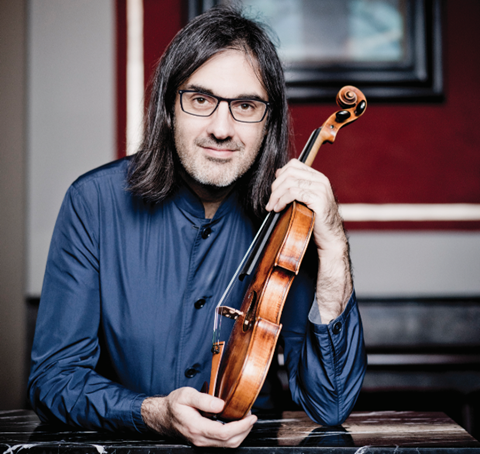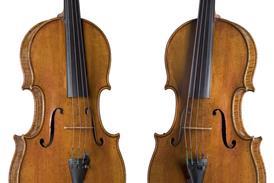Kavakos describes his first encounter with the 1734 violin, made when Antonio Stradivari was 90 years old

The following is an extract from an article on the 1734 ’Willemotte’ Stradivari violin in The Strad’s December 2020 issue. To read in full, click here to subscribe and login. The December 2020 digital magazine and print edition are on sale now.
Click here to purchase a poster of the Antonio Stradivari ‘Willemotte’ violin 1734
Discover more lutherie articles here
I first encountered the ‘Willemotte’ in 1994 at the Guarneri ‘del Gesù’ exhibition at New York’s Metropolitan Museum of Art. I met the owner, Mark Ptashne, in a hotel lobby and he showed it to me along with some other instruments. I was still on cloud nine after buying the ‘Falmouth’ Stradivari of c.1692 and wasn’t expecting any instrument to be as good, but when I put my bow on the string it was like the earth moved beneath me. I thought it couldn’t be true – the violin had so many overtones, it was as if every note gave new possibilities, and opened my eyes to what a great instrument could be. Obviously the ‘Willemotte’ wasn’t for sale, so I just hoped that one day I could get an instrument with such sound.
Twenty years went by and I came across the violin again at Florian Leonhard’s north London shop. I recognised it immediately and asked if I could play it. Exactly the same qualities stood out to me; but I thought there was even more richness ‘hiding’, and suggested that Florian could change the neck angle. He said he would only make the change if I bought the violin, as it was possible that other players wouldn’t agree with the change. We also tried other adjustments, such as the saddle height. The violin was so sensitive and responsive in the direction I wanted that I knew there were new sound heavens awaiting me.
Read: Leonidas Kavakos acquires 1734 ‘Willemotte’ Stradivari violin
Watch: Leonidas Kavakos on his 1734 ‘Willemotte’ Stradivari
Read more lutherie articles here
The ‘Willemotte’ is a very robust, powerful instrument, a huge model with broad f-holes, full arching and high ribs. It has a refined, perfumed kind of tone quality under the ear, yet when I hear someone else play it in a concert hall it has an incredibly complex, multidimensional character. It’s super-sensitive, and responds to everything I try to do with it. Three years after buying it, I’m still discovering a spiritual, ethereal quality to the sound, which comes from everywhere and nowhere – it’s a kind of presence that permeates everything I play. It never stops surprising me: I work on the sound non-stop, and often try different strings just to see what changes they make. Every time I start practising a piece, I’ll spend one or two days experimenting with different bows, playing the same passages to find the tone quality I prefer. I’ve tried around a hundred Strads and Guarneris in my life, and the ‘Willemotte’ is surely among the finest I’ve ever played.
Click here to purchase a poster of the Antonio Stradivari ‘Willemotte’ violin 1734
Interview by Christian Lloyd
-
This article was published in the December 2020 ‘Willemotte’ Stradivari issue
The late-period violin’s strong personality is the perfect match for its current owner Leonidas Kavakos. Explore all the articles in this issue. Explore all the articles in this issue
More from this issue…
- The 1734 ‘Willemotte’ Stradivari violin
- A newly discovered Vieuxtemps cadenza
- Coaching chamber music for school-age students
- Amandine Beyer on recording C.P.E. Bach’s string symphonies
- The history of the viola d’amore
- Evolving interpretations of the great vioinists
Read more playing content here
-

Janine Jansen: A spiritual connection
- 1
- 2
- 3
 Currently reading
Currently reading‘It was like the earth moved beneath me’ - violinist Leonidas Kavakos on playing the ’Willemotte’ Stradivari
- 4
- 5
- 6
- 7
- 8
- 9










































No comments yet